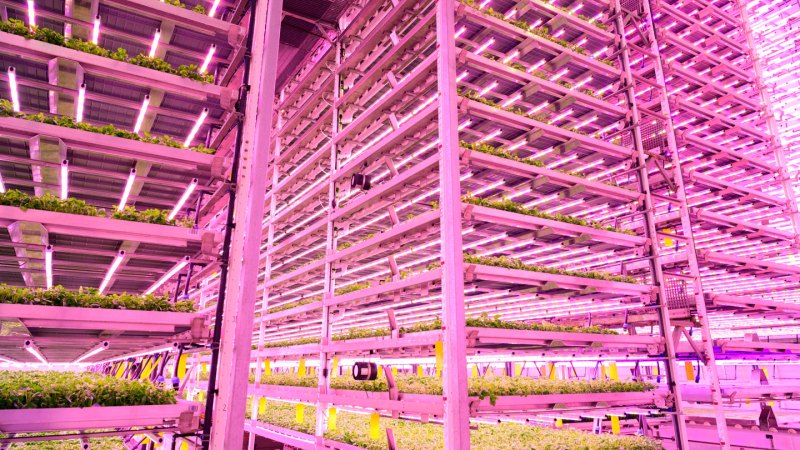
Flicking the dimmer switch can help some indoor farmers curb one of their biggest challenges: rising electricity costs.
Growing crops in stacked rows indoors under fixed-intensity artificial lights can produce more food per square foot using less land and water than traditional outdoor farms. But this vertical farming technique is also energy intensive and expensive (SN: 26.9.08). Now, researchers have created a computer program that controls lighting to optimize photosynthesis and electricity bills. Described on September 24 at Frontiers in sciencethe computer program adjusts the intensity of the grow lights every hour based on the changing cost of electricity.
This “smart lighting” could potentially reduce vertical farm electricity costs by up to 12 percent, says Leo Marcelis, a horticulturist at Wageningen University in the Netherlands. That could save some farms tens of thousands of dollars a year, according to CEA’s 2021 Global Census Report — a study of the indoor and controlled environment agriculture industry — and Marcellis’ own projections.
But how can indoor crops fare under dynamic lighting? Marcelis and colleagues tested how leafy greens such as basil, spinach and arugula responded to light patterns that changed hourly. A group of plants was grown under intervals of high then low intensity illumination. Another group was grown under light that was more intense in the morning and dimmer in the afternoon. The mature weight and leaf area of both groups – which can determine a plant’s value in the supermarket – were about the same as plants grown under fixed-intensity lights.
The new computer program did not specify the experimental lighting conditions, but the team now knows that indoor farms have room to save electricity. Continued research testing dynamic lighting at larger scales is needed, says Marcelis. He plans to continue experimenting with how much dynamic lighting indoor crops can handle.
The study “seems to be a very good proposition to start more research,” says Fatemeh Sheibani, a plant physiologist at Purdue University in West Lafayette, Ind. But she points out that the work is preliminary and that dynamic lighting is “not a near-term benefit for vertical farming.”
#Smart #lighting #vertical #farming #affordable
Image Source : www.sciencenews.org